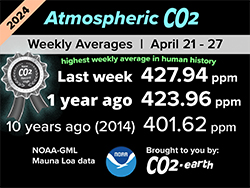Hoken Tech participates in Pomelo
Hoken Tech participates in Pomelo
For the first time ever, the startup Hoken Tech participates in the fourth season of the Pomelo grant, thus being able to recover funds to improve its game and integrate previously absent functions.
What is Pomelo?
Pomelo is an on-chain platform on the EOS blockchain that allows anyone to participate in a project, and raise funds as if it were crowdfunding in addition, the related project presented will have the ultimate goal of contributing to the EOS ecosystem, as the whole provides a strong sense of sharing, and all of the projects presented are open source or will release the code once the various milestones listed in the grant itself have been completed.
What does Hoken Tech present?
As we mentioned at the beginning, this is the first active participation in the project for Hoken Tech, and considering that Pomelo is dedicated to projects that will then be integrated into the EOS blockchain ecosystem, we, therefore, preferred to focus on the game we are already developing and that some of you have already had the opportunity to test it.
The ultimate goal of the grant presented is to publish the source code of the game so that everyone will have the opportunity to copy the code and customize the game according to their tastes and thus effectively expand the game offer on this blockchain.
Why release the source code?
Some of you may wonder why a capital company wants to release its own game developed precisely to be monetized, free and public to all and therefore in theory hurt itself.
To answer this question we must first analyze the aspect of the Pomelo project and platform, as it is true that we are going to publish the code compiled by us, but it is true that thanks to this trade-off, i.e. sharing the code to have donation exchange, allows us to recover important capital and speed up the development process.
Also, let's not forget that the code will be published on our GitHub page, and therefore all those who are interested in forking the code will pass through our page, and the more people who fork the code, the more people will know about our startup and our game, and this will also be synonymous with efficiency, given that a well-made game and code will be more inviting than unclear code or with errors, and therefore will be less forked.
So we can say that for us it will be a source of pride if 10, 100, or 1000 people copy our code, as it will mean that we would have done a great job with the funds obtained from the grant, and consequently, we will have expanded the range of blockchain games on EOS exponentially, leading from a few active games to over X games created by anyone, so if 1000 people copied our game, we would have as many 1000 games, all different, created on the EOS blockchain.
How did you decide the milestones?
The milestones, or checkpoints of the project, have been elaborated regarding the complexity of the code to be integrated or modified to the existing one, as not all the code can be integrated and sometimes it is necessary to delete and redo from scratch.
In this case, since the backbone of the game has already been created, at this point the steps that will be completed over time will be:
Integration of login via wallet (barring complications, a hardware wallet will also be integrated)
The expansion of the multi-player, as for the moment the game supports the single-player mode
The integration of NFTs as playable cards (something quite complicated and which will take months to complete compiling the code)
All these improvements will be possible and will also be made based on the amount that our grant will be able to obtain, given that if the integration of the wallet can be completed and implemented with less than €5,000, for the multi-player and the integration of the NFTs, between €50,000 and €150,000 will be needed.
And this is where the community and the quadratic funding algorithm come into play, as this algorithm rewards the projects that have the largest donors and not those who have obtained the largest amount from donors, this means that the number of people who donate, and not the single donation that the various donors will make to the project.
Considering that the project has already been partially implemented thanks to our resources, the same will go on over time, and the more donors who will donate to our grant, the faster we will be able to complete the various steps, among other things we remember that since the code will be public, in the end, anyone will be able to fork it and create their own game independently, even those who have donated or those who have not donated.
With this, all that remains is to share the grant link with you to donate EOS to this project and you will only have 1 month to donate to it, as by mid-December the projects that have recovered the capital and how the algorithm will eventually have distributed the $350,000 fund made available for this event:
nft, hoken tech, blockchain, cryptoart, eos, nft art, artificial intelligence, ai, watch authentication, crypto artist, nfts, web3, nft game, web3 game, videogame, nft distributor, videogame blockchain







